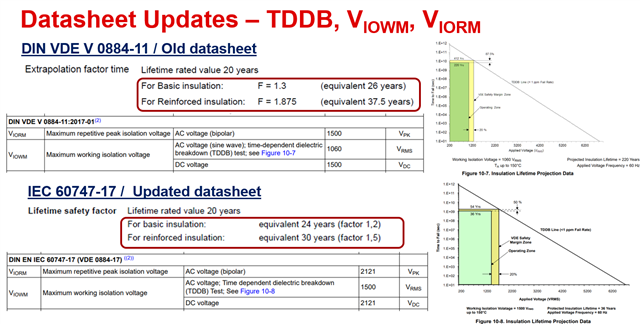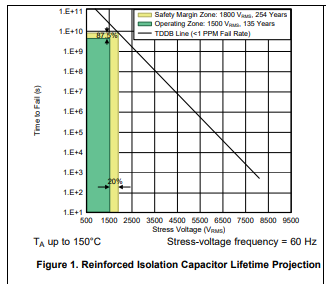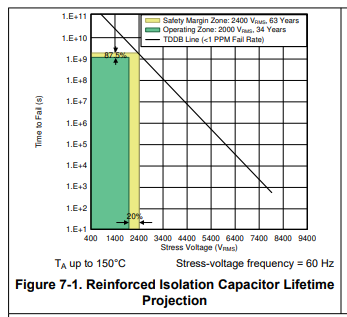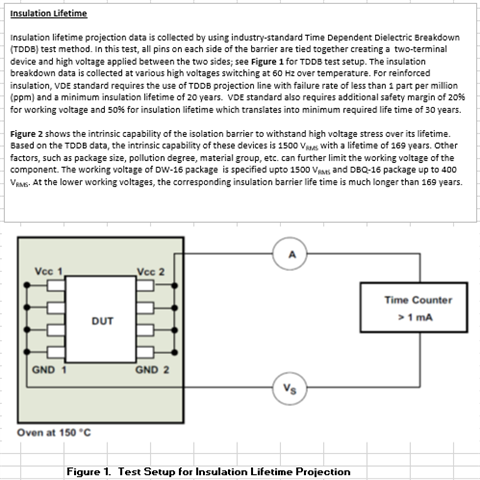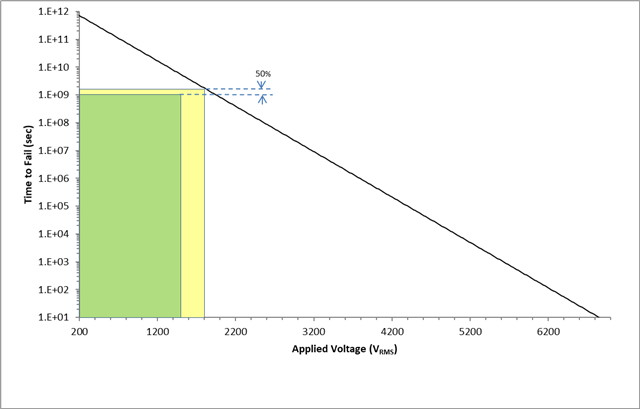Other Parts Discussed in Thread: UCC21710, , UCC21750
Tool/software:
Hello TI Team,
We are evaluating the ISO5852S for a new design and have a question regarding its long-term reliability, prompted by a change we noticed in the datasheet specifications over time.
An older datasheet for the automotive version (SLLSEQ2A, from 2016) specified VIORM = 2121 V. However, the latest datasheet for the industrial version (SLLSEQ0C, from 2023) specifies a significantly higher VIORM = 2828 VDC/ 2828 Vpk.
Our application requires functional isolation with a continuous working voltage of 2500 VDC. We do not need to meet the formal VDE certification for this design.
Given the historical change in the specification, we would like to ask for clarification:
-
Was the increase from 2121V to 2828V the result of a physical change/improvement to the component, or was it based on new characterization and re-certification to a different standard?
-
Can we confidently rely on the ISO5852S for long-term reliability (e.g., a 15+ year lifetime) at a continuous 2500 V<sub>DC</sub>, or is this value primarily a certification limit rather than a physical operational limit?
We want to ensure we understand the basis for this change before committing to this part for our design's lifetime.


